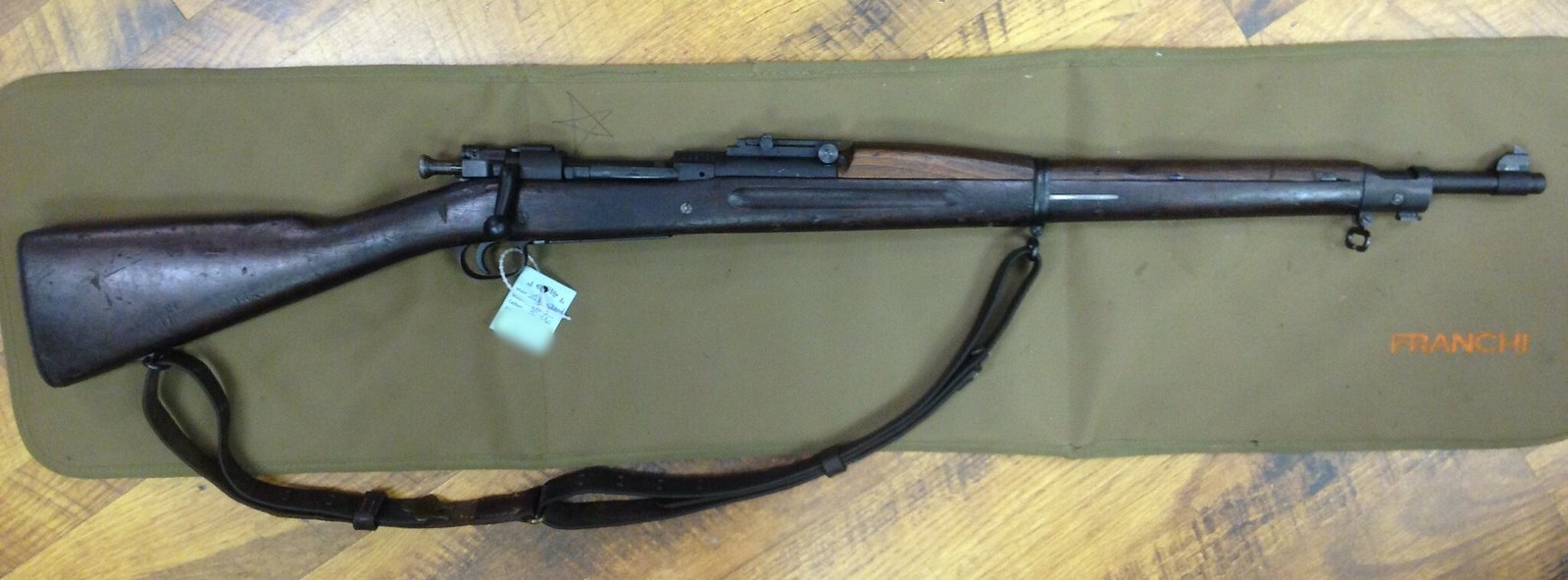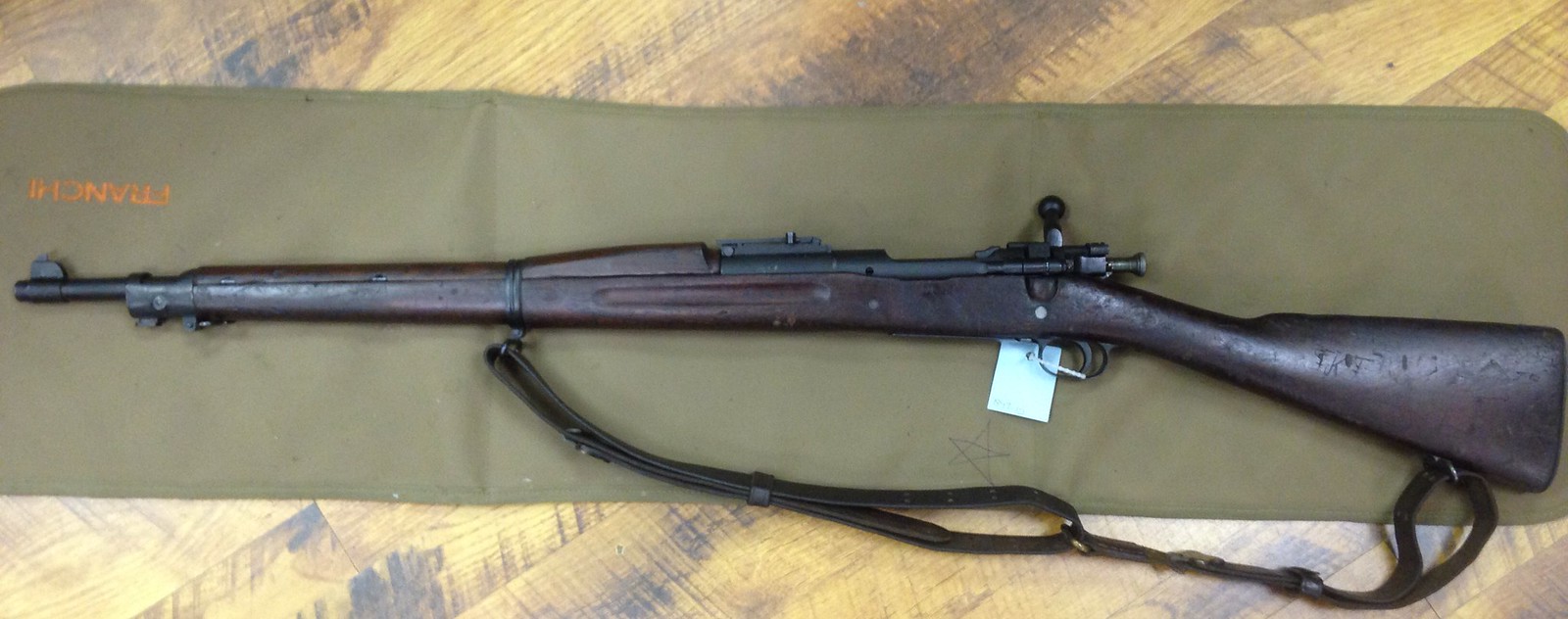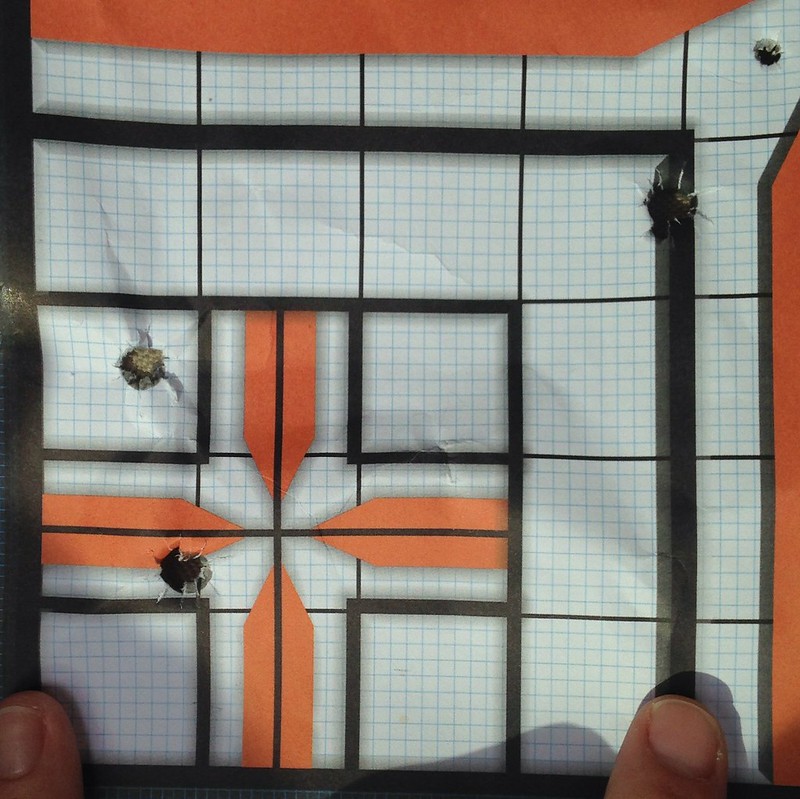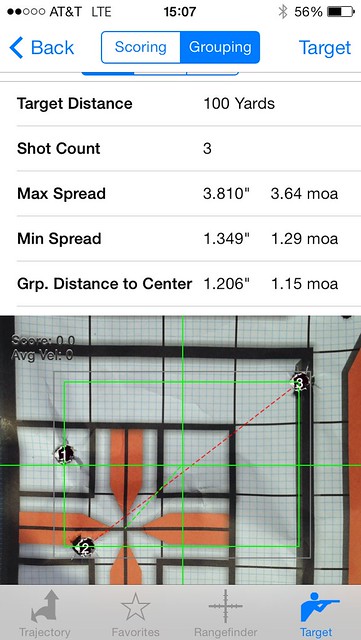My grandfather on my father's side used one of these on Guadalcanal. My grandfather on my mother's side trained and was a decorated Army marksman with an '03
This is a service rifle. It was born in early 1919 with receiver serial number 382,759 at the Rock Island Arsenal, on the Mississippi River, between Iowa and Illinois.
This serial number indicates the receiver was made in 1919, shortly after World War I had ended, and after the first Rock Island Arsenal “late number” receiver; correctly and consistently heat-treated to withstand chamber pressures from the .30-06 Springfield cartridge (serial number 285,507).
The rifle contains a multitude of World War II replacement parts, including the barrel, sights, bolt, bolt sleeve, and several others. This is a strong indication of World War II service. The rifle could have possibly been in any one of the Pacific, North African, or European Theatres of the War.
After service use in World War II, the rifle was overhauled by a United States military armorer: it was re-barreled, refinished, and re-assembled from mixed, working service parts. A Hatcher Hole was added at some point during the service career of the rifle. The rifle was subsequently placed in United States Ordnance Stores.
The rifle left Ordnance Stores, bound for Greece, sometime between 1947 and 1949 at the behest of President Harry S. Truman. At this point, the rifle may have been used against communist insurgents in the Greek Civil War. The rifle remained in Greek Ordnance Stores until being returned to the United States, and to the Civilian Marksmanship Program (CMP) therein, in late 2001. Shortly afterwards, the rifle was sold.
The presence of a Hatcher Hole on a so-called “high number” receiver, while not definitive, is sometimes anecdotal evidence that the receiver was at one point a part of a 1903 service rifle issued by the United States Marine Corps. However, in the case of the history of this specific rifle, due to postwar Greek service, it is not necessarily indicative of United States Marine Corps issuance.
As the rifle lies:
The stock is an S-type Mark I with finger grooves, made at Springfield Armory ca. 1919. The stock is stamped on the underside with the numbers 77 and 3 2, just forward of the magazine floorplate. These are possibly the last four serial number digits of the receiver to which the stock originally belonged. The magazine cutoff recess is stamped with a “J” . The acceptance stamp is on the left side just behind the receiver cutout and reads “D.A.L.”: a Springfield Armory inspector mark. The left side contains the Mark I cutout to accommodate the ejection port of a Pederson Device-configured receiver. Markings behind the trigger guard consist of three non-serif font “P” proof stamps, both encircled. In between two of the proof marks is an “E”, also without serifs. Moving further back on the stock, there is what appears to be a “U”, then two marks of the numeral “8” are further back still, along with what is either an “X” or crossed cannons. The initials “T.K.T.” are hand-carved crudely into the left side of the buttstock, perhaps by an American or Greek soldier. The bottom of the magazine floorplate is stamped with a “B”, as is typical for M1903 rifles provided for Greek service.
High Standard Manufacturing Company produced the rifle barrel, stamped with the Springfield Armory “flaming bomb”, in September of 1944, for use in the World War II overhaul. The rifle handguard was manufactured by the Booher Woodworking Company of Camden, NY, ca. 1944, as a replacement for use in overhaul. This handguard may have been installed either with the barrel, or at the CMP in 2001 or after, during inspection and repair.
The rear sight is a ladder-style, lacking a Volley fire notch at the top. It was manufactured by the Perry Pointe Company ca. 1944 as a replacement. The buttplate is pattern stamped and dates to World War II, manufactured by Remington Arms.
The bolt handle is electropenciled with a 4-digit number that does match the receiver serial number, almost certainly added during Greek loan. The underside of the bolt handle is stamped “R”, indicating manufacture by Remington Arms and giving the bolt a 1903A3 provenance. The bolt was therefore produced in September 1941 or later, during World War II. The cocking piece is also a 1903A3 configuration, and again manufactured by Remington Arms. The safety is also stamped “R”, and of Remington Arms origins. The right side of the bolt sleeve is stamped with a “3”, followed by what appears to be an “L” in lowercase cursive script. The bolt sleeve and magazine cutoff are of Springfield Armory origin.


This is a service rifle. It was born in early 1919 with receiver serial number 382,759 at the Rock Island Arsenal, on the Mississippi River, between Iowa and Illinois.
This serial number indicates the receiver was made in 1919, shortly after World War I had ended, and after the first Rock Island Arsenal “late number” receiver; correctly and consistently heat-treated to withstand chamber pressures from the .30-06 Springfield cartridge (serial number 285,507).
The rifle contains a multitude of World War II replacement parts, including the barrel, sights, bolt, bolt sleeve, and several others. This is a strong indication of World War II service. The rifle could have possibly been in any one of the Pacific, North African, or European Theatres of the War.
After service use in World War II, the rifle was overhauled by a United States military armorer: it was re-barreled, refinished, and re-assembled from mixed, working service parts. A Hatcher Hole was added at some point during the service career of the rifle. The rifle was subsequently placed in United States Ordnance Stores.
The rifle left Ordnance Stores, bound for Greece, sometime between 1947 and 1949 at the behest of President Harry S. Truman. At this point, the rifle may have been used against communist insurgents in the Greek Civil War. The rifle remained in Greek Ordnance Stores until being returned to the United States, and to the Civilian Marksmanship Program (CMP) therein, in late 2001. Shortly afterwards, the rifle was sold.
The presence of a Hatcher Hole on a so-called “high number” receiver, while not definitive, is sometimes anecdotal evidence that the receiver was at one point a part of a 1903 service rifle issued by the United States Marine Corps. However, in the case of the history of this specific rifle, due to postwar Greek service, it is not necessarily indicative of United States Marine Corps issuance.
As the rifle lies:
The stock is an S-type Mark I with finger grooves, made at Springfield Armory ca. 1919. The stock is stamped on the underside with the numbers 77 and 3 2, just forward of the magazine floorplate. These are possibly the last four serial number digits of the receiver to which the stock originally belonged. The magazine cutoff recess is stamped with a “J” . The acceptance stamp is on the left side just behind the receiver cutout and reads “D.A.L.”: a Springfield Armory inspector mark. The left side contains the Mark I cutout to accommodate the ejection port of a Pederson Device-configured receiver. Markings behind the trigger guard consist of three non-serif font “P” proof stamps, both encircled. In between two of the proof marks is an “E”, also without serifs. Moving further back on the stock, there is what appears to be a “U”, then two marks of the numeral “8” are further back still, along with what is either an “X” or crossed cannons. The initials “T.K.T.” are hand-carved crudely into the left side of the buttstock, perhaps by an American or Greek soldier. The bottom of the magazine floorplate is stamped with a “B”, as is typical for M1903 rifles provided for Greek service.
High Standard Manufacturing Company produced the rifle barrel, stamped with the Springfield Armory “flaming bomb”, in September of 1944, for use in the World War II overhaul. The rifle handguard was manufactured by the Booher Woodworking Company of Camden, NY, ca. 1944, as a replacement for use in overhaul. This handguard may have been installed either with the barrel, or at the CMP in 2001 or after, during inspection and repair.
The rear sight is a ladder-style, lacking a Volley fire notch at the top. It was manufactured by the Perry Pointe Company ca. 1944 as a replacement. The buttplate is pattern stamped and dates to World War II, manufactured by Remington Arms.
The bolt handle is electropenciled with a 4-digit number that does match the receiver serial number, almost certainly added during Greek loan. The underside of the bolt handle is stamped “R”, indicating manufacture by Remington Arms and giving the bolt a 1903A3 provenance. The bolt was therefore produced in September 1941 or later, during World War II. The cocking piece is also a 1903A3 configuration, and again manufactured by Remington Arms. The safety is also stamped “R”, and of Remington Arms origins. The right side of the bolt sleeve is stamped with a “3”, followed by what appears to be an “L” in lowercase cursive script. The bolt sleeve and magazine cutoff are of Springfield Armory origin.





